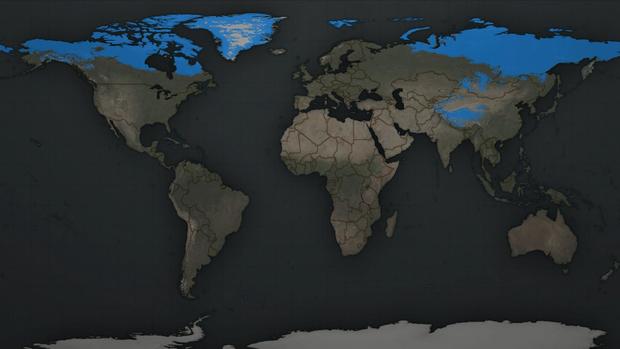The idea came from an eccentric scientist, but new scientific reports suggest it is entirely possible.
To slow the melting of permafrost in the Arctic, scientists believe we should release herbivores like horses, bison or reindeer onto the northern snow. Recently published research is a simulated program that runs on computers with real data, showing that when enough animals are needed to be present in the Arctic, about 80% of the world’s permafrost will be protected that existed until 2100. .
The inspiration for this study was the experiment carried out in the town of Chersky, in Siberia, by the “eccentric” scientist Sergey Zimov; he tried to bring herbivores to arctic glaciers 20 years ago.
In the past, he and his son, Nikita, have studied the effects of herbivores on freezing regions year round; they named it Pleistocene Century Park, which means their “park” was meant to preserve the Ice Age, much like Jurassic Park is home to dinosaurs. Mr Zimov also encouraged geneticists to resurrect mammoths to support their research.
Permafrost is a thick layer of soil that freezes year round. But due to the effects of climate change, the concept of “eternal” is no longer correct. The melting permafrost will cause the return of greenhouse gases that have been in the cold soil for thousands of years.
Scientists fear that it will be an uncontrollable loop that will make the Earth increasingly hotter.
In winter, the permafrost in Chersky, Siberia is -10 degrees Celsius, but the air can be much colder, down to -40 degrees Celsius. In general, winter is accompanied by a thick layer of snow covering the face. Soil, preventing the effects of cold air above, causing the soil to bring moderate temperature
The idea of scientist Zimov is as follows: bring the herbivorous ungulate into the area to spread the snow evenly on the ground, compact the soil and cool the area. The results of the study showed that Zimov’s idea was effective: with 100 herbivore individuals released over an area of 1 km2, the snow thickness was halved, reducing the ability to prevent heat between the ground and the air. prolong the existence of permafrost.
In order to take the “Pleistocene Century Park” experiment to an even larger scale, researcher Christian Beer from the University of Hamburg carried out a computer simulation: they built a model to reproduce the impact of climate on permafrost in the northern hemisphere. The results of the study, published in the journal Nature, show that if emissions continue to increase, the temperature of the permafrost will increase by 7 degrees Celsius; permafrost will be gone in 80 years.
But when the pasture herds reach the glacial zone, the soil will only increase by 4 degrees Celsius, enough to preserve the permafrost until the end of this century. However, researcher Beer did not give a precise figure, how many individual animals are needed to keep permafrost from melting; Beer believes more research is needed to confirm this.
However, Christian Beer still estimates: “Currently we have about 5 reindeer per square meter from the Arctic. With 15 birds per square kilometer, calculations show that we will be able to save 70% of the permafrost. “
Rick Thoman, a climate expert, thinks this approach works, but still doubts the feasibility of the project. Thoman said covering millions of square kilometers of the Arctic with horses, reindeer and bison was difficult to implement.
Beer and his team also took into account the downsides of the above approach, such as the herbivores ‘treating’ the moss that grows each summer, making the soil warmer. However, simulated models show that the effect of animal soil cooling in winter is much larger than their effect on soil warming in summer.
Researcher Beer has determined the next step; He is communicating with biologists to find out how herbivores will migrate between areas of permafrost.



